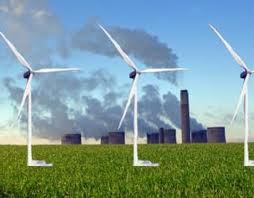Data for electricity supply and consumption in the NEM up to the end of November 2013 show that, while annualised consumption continued to fall, there was a slowdown in the rate of fall in emissions.
The fall in annual consumption, compared with the year to November 2012 was 4 TWh, equivalent to just over 2%, a rate of annual demand reduction which has been fairly constant for over two years.
The fall in emissions, compared with one year ago, was 8.5 Mt CO2-e, equivalent to exactly 5%. It is now five years since both annual electricity demand and total annual emissions from generation in the NEM reached their historical maxima. The total fall in demand over those five years has been 14 TWh, equivalent to 7%, while the total fall in emissions has been 30 Mt CO2-e, equivalent to almost 16%.
The reasons for the slightly slower rate of emissions reduction since the last CEDEX can be seen in Figure 8. Black coal and gas generation fell, but brown coal generation was unchanged. Both hydro and wind generation increased, but did so more slowly than in recent months.
The inter-regional flows of electricity within the NEM show the combined effects of market behaviour very clearly. Annual net exports from Tasmania to Victoria continued to increase, as Hydro Tasmania seeks to maximise the financial benefits it gains so long as a price on emissions remains in place (and it has stored water available).
In turn, exports from Victoria to both NSW and SA also increased, reflecting the competitive advantage provided by the very low short run marginal cost of brown coal generation. The much higher cost of black coal outweighs the relatively small cost advantage which black coal generators gain from the carbon price. Net exports from Queensland to NSW have decreased considerably, but are still positive.
The effect on NSW generators is quite severe. In the last few months the NSW government owned Macquarie Generation’s two big power stations, Bayswater and Liddell, have averaged about 60% and 45% loads only, respectively, while Eraring, now owned by Origin Energy, has been averaging less than 40% and Vales Point B, also owned by the state government through Delta Electricity, has been averaging about 60%.
Overall, however, this represents little change in total coal fired generation over the past year. In Queensland, annual coal generation has fallen by nearly 9% over the past year. Major state government owned power stations Tarong, Callide C and Stanwell have been operating at about 30%, 45% and 65% respectively, while the state’s newest coal fired power station, Kogan Creek, is currently out of service having a solar pre-heating system for boiler feedwater added.
The renewed consumption decrease, particularly evident in NSW, may well be a consequence of the recent mild winter. NSW uses a higher proportion of electricity for space heating than Victoria and SA, which make more use of gas. Across the whole NEM, as previously noted, residential electricity consumption has been a major driver of falling total demand.
This is shown very clearly by data released by the ABS in recent weeks for Queensland, NSW and Tasmania (data for the other states is promised before the end of the year). In the two years from 2009-10 to 2011-12, average electricity consumption per customer (household) fell by 7.6% in Queensland, over 11% in NSW and over 17% in Tasmania.
The consequence of these dramatic consumption changes, calculated from data in another ABS publication, is that across Australia as a whole average annual household expenditure on electricity has barely increased, in real terms. Specifically, from 2009-10 to 2011-12, the real average price of electricity increased by 17% but average total annual expenditure increased in real terms by only 2.4%.
More recent data, for 2012-13, published by the two Queensland network businesses and by Ausgrid in NSW, show that the decline in household electricity consumption continued strongly, and perhaps even accelerated, in the most recent year. Given the duration and size of these consumption reductions, it seems unlikely that people are, metaphorically, “freezing [or boiling] in the dark”, as some of our more excitable political leaders would have it.
They are much more likely to be adopting simple and well known energy saving behaviours, and buying and using newer, and much more efficient appliances, including televisions, refrigerators and air conditioners.









